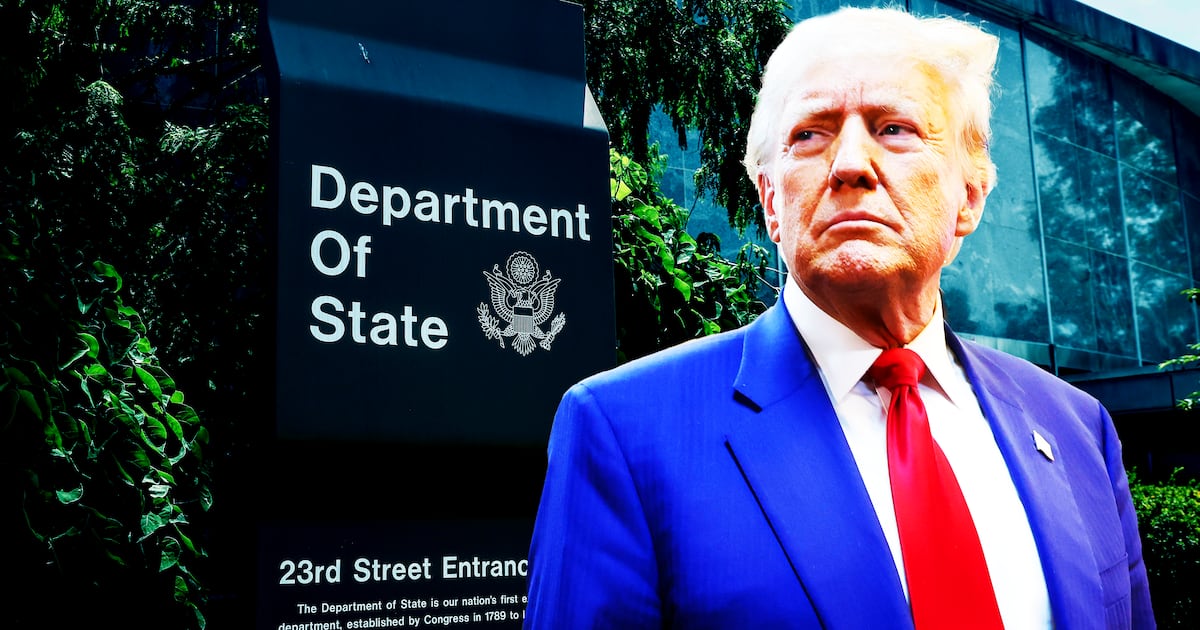Two of the most important tests of President Joe Biden’s promise to “end the Forever War” are found not on the battlefields of Afghanistan but inside the cages of Guantanamo Bay.
There, since 2007, the U.S. has caged Asadullah Haroon, sometimes called Haroon al-Afghani, a member of the Hezb-e-Islami, an insurgent group and political faction led by Gulbuddin Hekmatyar, an American ally in the 1980s and enemy in post-9/11 Afghanistan. A year later, Guantanamo caged another Afghan, Muhammad Rahim, the last man known to have experienced CIA torture inside the agency’s black sites.
Haroon and Rahim are the last Afghans among Guantanamo’s 40 detainees. They are informally known as Forever Prisoners—people the military does not charge with any war crime but claims are too dangerous to be free.
Biden has ordered the U.S. military to withdraw from Afghanistan. He has not ordered the military to free Haroon and Rahim. What Biden does about Guantanamo’s final Afghans will say much about how substantively Biden intends to end the Afghanistan war. But neither the National Security Council, the State Department, nor the Pentagon responded to questions about whether ending a war obligates Washington to release the war’s final prisoners.
“It’s our policy not to discuss open or pending legal matters,” said a senior administration official. “But as it relates to the overall issue of Guantanamo, the Biden administration remains committed to the goal of closing the facility. To that end, the NSC is working closely with the Departments of Defense, State, and Justice, and other departments and agencies.”
On Monday, Haroon asked a federal court to order Biden to free him. In a statement made in a closed hearing but summarized by his attorneys, Haroon, speaking from Guantanamo, said, “I am not a terrorist. I am an Afghan.” But the Justice Department is not only fighting his release, it argued in court something it never has before: that Haroon is actually a member of al Qaeda.
Haroon’s case has the support of the U.S.-backed Afghan government, which filed an unprecedented motion before the Washington D.C. District Court. “Haroon should be released because all hostilities between Hezb-e-Islami Gulbuddin (‘HIA’) and the United States have ceased,” argued the Afghan Foreign Ministry. His attorney, Mark Maher of the human-rights group Reprieve, said Haroon “is a prisoner of war, and that war is over.”
But the Afghan government isn’t coming to Rahim’s defense, Rahim’s attorneys confirmed. Afghan officials at its U.S. embassy declined to explain. But the U.S.’ claims that Rahim is a member of al Qaeda lock him between Biden’s position of withdrawing from Afghanistan but not the broader War on Terror.
“With Rahim, it is harder for his lawyers to make the clean argument because the government will inevitably come up with spurious suggestions that he was a member of, or affiliated with, al Qaeda,” said Clive Stafford Smith, another attorney for Haroon and the founder of Reprieve.
Still, Stafford Smith continued, the U.S. withdrawal from Afghanistan “obviously supports [freeing] both Asad [Haroon] and Rahim, though arguably not until September when everyone has left.”
When the U.S. last reviewed Haroon’s case, in 2016, a panel of Obama administration officials and military officers concluded he was too dangerous to release because, in addition to his Hekmatyar affiliation, he “lack[ed] a realistic plan for the future.” The officers claimed Haroon had “extensive time” fighting the U.S. and its allies in Afghanistan—something the Afghan government, in its filing, contradicted.
“Haroon has never caused nor attempted to cause harm to American person[s] or property, and has never espoused any violent beliefs against any American person or property,” the Afghan foreign ministry told the district court. The ministry noted that HIA made peace with the Afghanistan government in 2016 and Hekmatyar sits on the body entrusted to negotiate a peace accord with the Taliban.
But in the public portion of the court hearing, not only did the Justice Department take a hard line but it claimed, novelly, that Haroon “was part of and substantially supported al Qaeda.” Justice Department attorney Stephen Elliott, who cited secret intelligence reports, argued that accordingly, Haroon is “lawfully detained,” however “lengthy” his imprisonment. The Guantanamo review board’s 2016 rationale for keeping him detained never asserted any membership in al Qaeda.
It was the first Guantanamo habeas-corpus proceeding of the Biden administration. Evidence presentation is expected to begin Tuesday.
Haroon, according to his attorneys, told the court on Monday that he had “always” been a member of HIA, stemming back to his childhood in a refugee camp. “We wanted the Soviet Union out of Afghanistan, and so did the U.S.,” he said. He reflected on being unable to hold his daughter, Maryam, since she was a baby 14 years ago, and said he would hold no “hard feelings” against the Americans.
“When I was young I learned that the U.S. was a country of law,” Haroon said. “My attorneys tell me that justice is possible and with much respect I ask you to finally give me justice and send me home to my daughter.”
But the injustices the U.S. inflicted on Haroon did not include the regimen of torture that the CIA inflicted on Rahim.
Rahim, seized by the U.S. in 2007, was the last person known to have gone through the CIA’s post-9/11 black sites. The Senate intelligence committee’s 2014 torture report documents Rahim’s experience extensively, and calls him an “al-Qa'ida facilitator.” CIA Director Mike Hayden personally requested approval from President George W. Bush to torture Rahim. The Justice Department approved a torture plan on July 20. The CIA went to work the very next day.
There were 120 hours between July 21 and July 25, 2007. According to the Senate’s review of internal CIA documentation, the agency’s torturers kept Rahim awake for 104.5 of them, shackled and clothed only in a diaper and shorts. It was the inauguration of eight sleep-deprivation sessions Rahim endured. It was part of a torture menu that included “dietary manipulation, facial grasp, facial slap, abdominal slap, and the attention grab.” The Senate report noted that when he provided “historical information,” the CIA rewarded him with a towel to cover his body.
Yet that was all Rahim provided. His torture yielded, the Senate found, not even a single intelligence report. Rahim informed his CIA captors he would simply lie if tortured. The fruitlessness prompted one of the CIA’s seniormost torturers, Jose Rodriguez, to argue uncharacteristically against the regimen, as he considered “the tools in our tool box [unable] to overcome Rahim's resistance techniques.” By December, they transferred him to Guantanamo, claiming him to be a “close associate” of Osama bin Laden.
Two months after the Guantanamo review panel said Haroon was too dangerous to release, it said the same about Rahim. It cited his “refusal to take responsibility for his involvement with al Qaeda” and his “consistent and long-standing” support for terrorist attacks against the nation that tortured him.
Claire Cahoon, an attorney for Rahim, said she and colleagues were planning additional legal action to press for his release. She said the announced end of the Afghanistan war ought to invalidate the justification for his captivity.
“The Biden administration’s announcement is a step in the right direction toward releasing this man and the other men who are being held without the traditional constitutional protections afforded to the accused in America,” Cahoon said. “We feel strongly that the end of hostilities should also spell the end of the government’s detention authority under the AUMF for Mr. Rahim.”
Asked if the CIA supported keeping Rahim caged, where he is unable to tell people what the agency did to him, a CIA spokesperson declined to comment.
Andrea Prasow, the deputy Washington director of Human Rights Watch, said that no end to the Forever War could be complete with Guantanamo open.
“When Biden tied the withdrawal of U.S. troops from Afghanistan to the 20th anniversary of the September 11 attacks, the implication was that he was ending the so-called ‘forever war.’ But the ‘war’—really the militarized response to threats both real and imagined—won’t be over until the U.S. breaks from the post-9/11 abusive policies,’” Prasow said. “Guantanamo was the centerpiece of those policies, and until it is closed and the U.S. ends indefinite detention, the so-called war won’t be over.”






